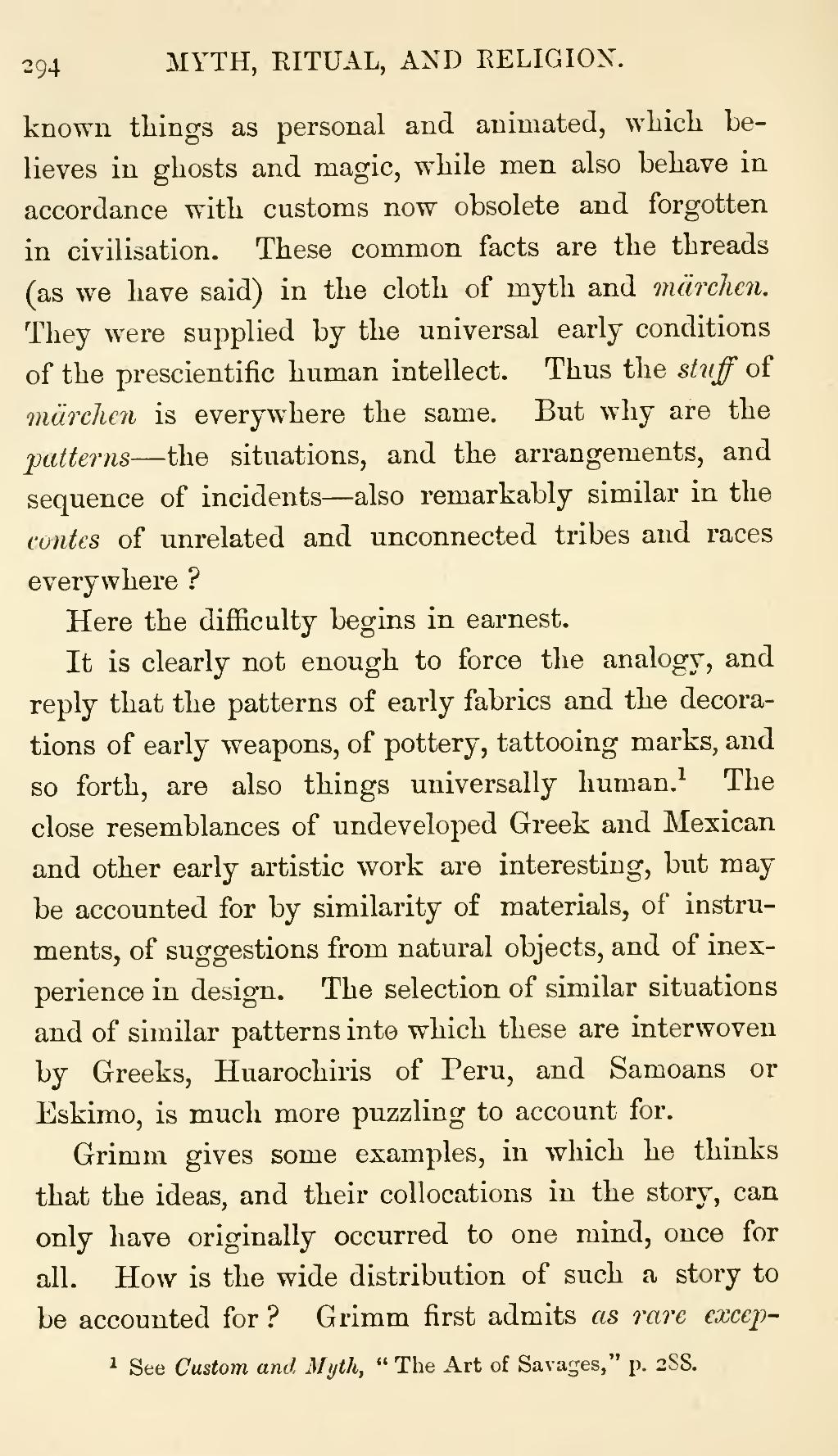known things as personal and animated, which believes in ghosts and magic, while men also behave in accordance with customs now obsolete and forgotten in civilisation. These common facts are the threads (as we have said) in the cloth of myth and märchen. They were supplied by the universal early conditions of the prescientific human intellect. Thus the stuff of märchen is everywhere the same. But why are the patterns—the situations, and the arrangements, and sequence of incidents—also remarkably similar in the contes of unrelated and unconnected tribes and races everywhere?
Here the difficulty begins in earnest.
It is clearly not enough to force the analogy, and reply that the patterns of early fabrics and the decorations of early weapons, of pottery, tattooing marks, and so forth, are also things universally human.[1] The close resemblances of undeveloped Greek and Mexican and other early artistic work are interesting, but may be accounted for by similarity of materials, of instruments, of suggestions from natural objects, and of inexperience in design. The selection of similar situations and of similar patterns into which these are interwoven by Greeks, Huarochiris of Peru, and Samoans or Eskimo, is much more puzzling to account for.
Grimm gives some examples, in which he thinks that the ideas, and their collocations in the story, can only have originally occurred to one mind, once for all. How is the wide distribution of such a story to be accounted for? Grimm first admits as rare excep-
- ↑ See Custom and Myth, "The Art of Savages," p. 288.
